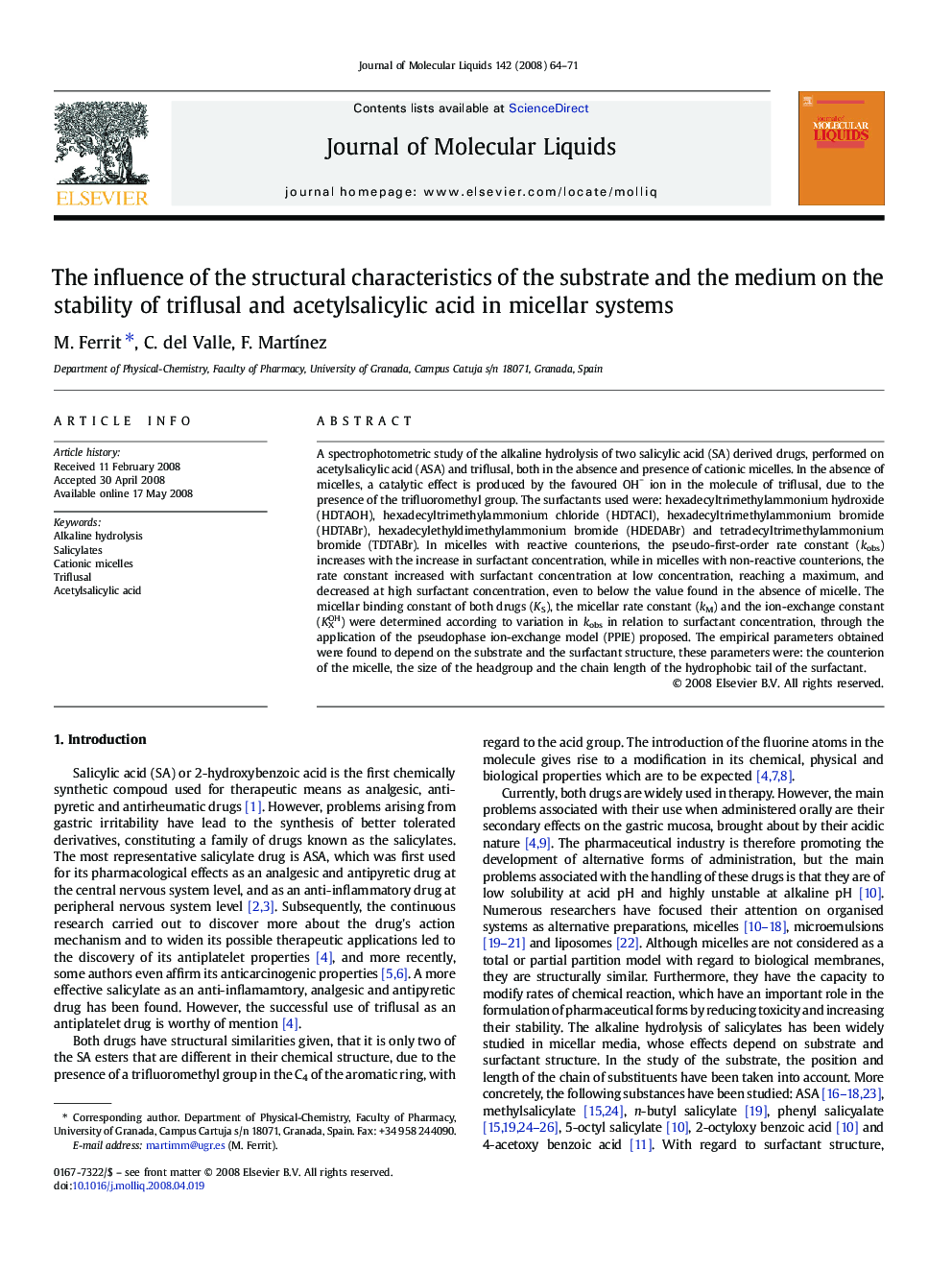| Article ID | Journal | Published Year | Pages | File Type |
|---|---|---|---|---|
| 5413329 | Journal of Molecular Liquids | 2008 | 8 Pages |
Abstract
A spectrophotometric study of the alkaline hydrolysis of two salicylic acid (SA) derived drugs, performed on acetylsalicylic acid (ASA) and triflusal, both in the absence and presence of cationic micelles. In the absence of micelles, a catalytic effect is produced by the favoured OHâ ion in the molecule of triflusal, due to the presence of the trifluoromethyl group. The surfactants used were: hexadecyltrimethylammonium hydroxide (HDTAOH), hexadecyltrimethylammonium chloride (HDTACl), hexadecyltrimethylammonium bromide (HDTABr), hexadecylethyldimethylammonium bromide (HDEDABr) and tetradecyltrimethylammonium bromide (TDTABr). In micelles with reactive counterions, the pseudo-first-order rate constant (kobs) increases with the increase in surfactant concentration, while in micelles with non-reactive counterions, the rate constant increased with surfactant concentration at low concentration, reaching a maximum, and decreased at high surfactant concentration, even to below the value found in the absence of micelle. The micellar binding constant of both drugs (KS), the micellar rate constant (kM) and the ion-exchange constant (KXOH) were determined according to variation in kobs in relation to surfactant concentration, through the application of the pseudophase ion-exchange model (PPIE) proposed. The empirical parameters obtained were found to depend on the substrate and the surfactant structure, these parameters were: the counterion of the micelle, the size of the headgroup and the chain length of the hydrophobic tail of the surfactant.
Related Topics
Physical Sciences and Engineering
Chemistry
Physical and Theoretical Chemistry
Authors
M. Ferrit, C. del Valle, F. MartÃnez,
